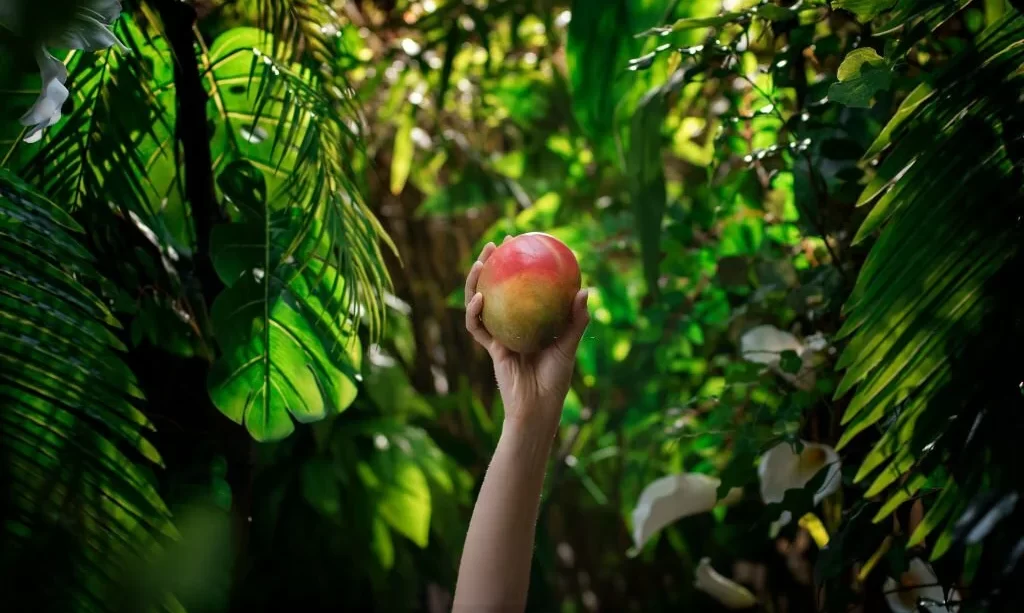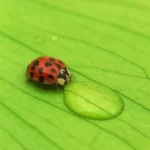The mango tree, with its lush green canopy and tantalizingly sweet fruits, is an iconic symbol of tropical paradise. Its vibrant and distinctive appearance has captured the imagination of people around the world. But what does a mango tree really look like, and what are the key features that make it stand out in the landscape? In this exploration, we delve into the characteristics of mango trees, from their basic structure to the appearance of their leaves and foliage. As we uncover the visual allure of mango trees, we gain a deeper appreciation for these beloved icons of the tropical world.
Mango Tree Basics
Mango trees are known for their striking presence and can grow to impressive heights, reaching up to 100 feet (30 meters) under optimal conditions. They typically have a canopy that is dense and rounded, with branches extending in all directions. The tree’s lifespan is substantial, with some mango trees living for several decades, bearing fruit for many years.
The growth pattern of a mango tree is marked by a well-defined central trunk that branches out to form a network of sturdy limbs. These branches support the tree’s lush foliage and the weight of the fruit that it bears. The tree’s overall shape is often described as an evergreen, with its glossy green leaves contributing to its distinct appearance.
Foliage and Leaves
The leaves of a mango tree are one of its most recognizable features. They are generally oblong or elliptical in shape, and their size can vary from small to large, depending on the tree’s age and variety. Mango tree leaves are typically a vibrant, dark green, and they exhibit a glossy, waxy texture. The leaves are arranged alternately on the branches, and their bright coloration adds to the tree’s overall visual appeal.
These leaves are essential not only for photosynthesis but also for providing shade to the fruit they bear. The dense foliage of a mango tree creates a lush and verdant crown that offers relief from the scorching sun in tropical regions. The leaves are not only functional but also a significant contributor to the tree’s aesthetic charm, making mango trees a sight to behold in landscapes and orchards.
As we explore the visual elements of mango trees, the appearance of their leaves stands out as a defining characteristic of these majestic tropical trees. Their glossy green foliage not only provides a stunning backdrop for the fruit they bear but also showcases the vibrancy of the tropics in every leaf and branch.
Flowers and Inflorescence
Mango trees, beyond their lush foliage and delightful fruit, boast the remarkable feature of vibrant flowers. Mango tree flowers are small and fragrant, typically measuring around 1 inch (2.5 centimeters) in diameter. They have a distinctively symmetrical appearance, with five petals that can vary in color from pale pink to a deeper shade of magenta. The inflorescence of mango trees, where multiple flowers cluster together, is a stunning sight to behold. These inflorescences, often called panicles or racemes, can drape the tree’s branches, creating an ethereal and fragrant display.
The blooming of mango tree flowers marks the onset of the fruiting season. Each flower holds the potential to develop into a mango fruit, making the flowering stage a critical moment in the tree’s life cycle. While the flowers themselves are relatively small, their sheer abundance and vibrant colors create a captivating spectacle, attracting pollinators and human admirers alike.
Fruits
One of the most recognizable features of mango trees is, of course, their delectable fruits. Mangoes are renowned for their distinctive appearance, characterized by their oblong or ovate shape. Their size can vary, with some mangoes being as small as a few inches in length, while others can reach over a foot. The color of mangoes depends on the variety, ranging from green to various shades of yellow, orange, or even red when ripe.
Mangoes are typically smooth-skinned, but their texture may have variations, such as small blemishes, wrinkling, or net-like patterns on the skin. The flesh of a mango is juicy and succulent, often a rich orange or yellow hue, and it surrounds a large, flat, and hard pit in the center. The flavor of mangoes is renowned for its sweet, tropical taste with subtle variations among different mango varieties.
As one of the world’s most beloved fruits, mangoes are not just a treat for the taste buds but also a visual delight. Their vibrant colors, characteristic shape, and aromatic presence make them a true representation of tropical abundance. The sight of mango-laden branches in a mango orchard is a testament to the bountiful beauty of these iconic trees.
Bark and Trunk
The bark of a mature mango tree is characterized by its rough and scaly texture. As the tree ages, the bark becomes increasingly rugged and darkens in color, often appearing brown or gray. These rough textures and dark shades create a stark contrast with the vibrant green foliage and colorful fruits, contributing to the tree’s overall visual appeal.
The trunk of a mature mango tree is typically thick and sturdy, providing essential support for the extensive branches and the weight of the fruit. The trunk’s appearance can vary, with some mango trees having relatively smooth bark, while others may display a more deeply furrowed texture. The shape of the trunk can range from upright and cylindrical to more irregular and contorted, depending on the growth conditions and variety of the tree. It’s not uncommon to find mango trees with multiple trunks branching from the ground, adding to their unique and picturesque form.
Varieties and Variations
Mango trees exhibit variations in appearance depending on the specific variety and the environmental conditions in which they are cultivated. There are numerous mango varieties worldwide, each with its own distinct features. Some mango trees may produce smaller or larger fruit, while others are renowned for their unique flavor profiles.
Variations in mango tree appearance can also result from different growth practices and climates. Trees cultivated in arid regions may have a more compact appearance and smaller leaves, while those in tropical, humid environments tend to develop larger, lusher foliage. Climate and soil conditions influence the overall growth and appearance of mango trees, resulting in subtle but intriguing variations among trees in different regions.
In essence, the diverse varieties and variations of mango trees underscore their adaptability to a range of environmental factors, from arid deserts to tropical rainforests. These variations add depth to the already enchanting aesthetic of mango trees, making them not only a source of delicious fruit but also a visually captivating presence in the landscapes they grace.
Frequently Asked Questions
Are all mango tree leaves and fruits the same color?
No, the color of mango tree leaves and fruits can vary depending on the specific variety of the tree. While leaves are typically dark green, mango fruit color can range from green to various shades of yellow, orange, or red.
How long does it take for a mango tree to bear fruit?
Mango trees generally take several years to start bearing fruit, with some varieties taking longer than others. It can take anywhere from three to six years or more for a mango tree to produce its first crop of fruit.
Can I grow a mango tree in a non-tropical climate?
Mango trees thrive in tropical and subtropical climates, but there are dwarf and cold-hardy varieties that can be grown in some non-tropical regions. It’s important to consider local climate conditions and consult with experts to ensure successful cultivation.
What are some common pests and diseases that affect mango trees?
Mango trees can be susceptible to pests like aphids, scales, and fruit flies, as well as diseases like anthracnose and powdery mildew. Proper care, including regular pruning and pest control, can help maintain tree health.
Conclusion
Mango trees, with their majestic appearance and iconic fruits, epitomize the tropical beauty of nature. From their vibrant leaves, fragrant flowers, and delicious fruits to their distinctive bark and trunk, mango trees are a feast for the senses and a symbol of abundance in the tropics. The variations in their appearance, influenced by factors like variety and climate, only add to their allure, making each mango tree a unique work of natural art.
Beyond their aesthetic charm, mango trees provide a tangible connection to the rich cultural and culinary traditions of regions where they thrive. As they bear the promise of delicious fruit and create lush canopies, mango trees invite us to savor the sensory delight of the tropics and appreciate the natural wonders of the world.



